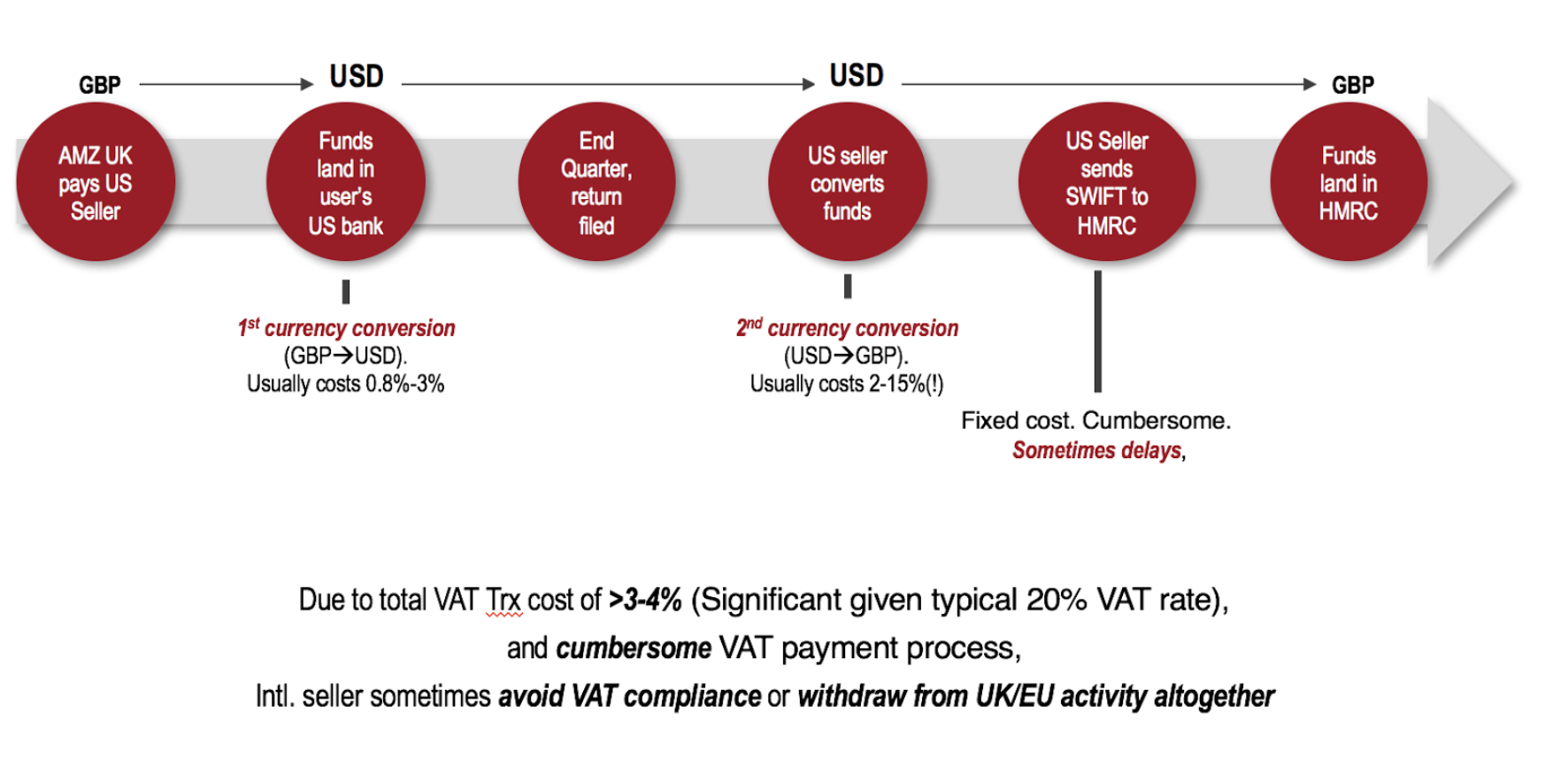Blog: The Million Dollar Case Study: Europe â Session #14: International Amazon Payments
The Million Dollar Case Study: Europe â Session #14: International Amazon Payments
Welcome to Session number 14 of the Europe Million Dollar Case Study. Wow, I can't believe we have got this far already. Time is flying past, and in that time, a lot of progress has been made.
In this week's session we had a special guest, Richard Gilbert, from Payoneer joining us, to talk to us about managing payments as an international seller. This is pretty important stuff, as it involves how you get paid, and how to save as much money as possible on converting international revenue streams. Great stuff!

Before we get into all of the insightful stuff Richard had to share, here's a few Jungle Slumber updates for you!
Jungle Slumber Updates
I have sent a full brief to a photographer in the UK, and the supplier has sent a sample over to them. I paid for the shipping for the sample via PayPal, easy peasy!
Production is still well underway and the factory are getting through the order of 1500pcs day and night.
I will be looking to send around 300 units by air to get them into stock over at the Amazon distribution center in the UK as soon as possible, for the purposes of this case study. I probably wouldn't do this if this product was not a part of MDCS, as it's more costly, especially for a heavier item. However, it is still something to bear in mind if you are in a rush and your product isn't too expensive to air freight.
The wheels are also in motion on the product listing content, which I am working on in the background whilst the shipping and photography are taking place.
If You Missed Previous Sessions…
Just in case you haven't been around for the full case study, there are also a few other very important things you will to do when you get to this point (inventory on the way), including:
- Set up a Europe Seller Central account, you will need this so that you can create an FNSKU barcode (more on this in Session #) and create a shipping plan (more on this in Session #) and get the relevant labels for your shipment.
- Register for VAT and register for an EORI number if you are selling in Europe, read more from Session #6
- Form a relationship with a freight forwarder who will handle the shipping from the port in China for you. Read more about this from Session #
Of course, if you are just joining and thinking what the flip, where am I? What did I miss? You can catch up on all sessions right here.
Getting Paid As An International Business Owner
Here's what we covered in this session:
- Key challenges for international sellers
- International payments for Amazon sellers
- Handling currencies and conversions
- Currency alternatives
- Exchange rate margins
- Impact on seller revenue
- Paying VAT obligations
This week's replay:
And slides:
Challenges for International Sellers
First up, Richard talks to us about some of the challenges that we face as international business owners. He categorized these into three main topics:
- Logistics and compliance – This is actually something Amazon FBA makes considerably easier for us, because you can send your inventory to Amazon and have them manage the rest, even if you are fulfilling across Europe. Sure, it's more difficult to run a Pan-EU Amazon business, but then it would be even more difficult to run your own ecommerce store if you were selling in those same markets.
- Language and localization – For example, translation, customer support across languages and understanding the nuances in demand across marketplaces.
- Payment and currencies – What we will cover today, how to get the most out of converting money you make in other currencies into your home/primary currency.
None of these challenges are insurmountable, as we have discovered throughout this case study. I have never sold anything on Amazon before, or had an ecommerce business. But with the right education and the right suppliers and partners at my side, there has been no part in the journey that I haven't been able to figure out and overcome.
Managing Currency For Amazon Sellers
Here's the bit you really need to know, in order to make a decision on how to manage payments for your business.
There are three ways you can go about converting your Amazon revenue in other currencies into your local currency:
- Use the Amazon Currency Converter for Sellers (ACCS) available for USD, CAD, GBP & EUR
- You can your own foreign bank account – not impossible but probably only for sellers with large operations, as it's difficult to set up bank accounts in other countries and usually requires you to be there in-person and set up a local business
- Or you could use a third party conversion solution
Let's assume that most sellers or soon-to-be sellers won't opt for the second option right now, so how does Amazon's ACCS service compare to a third party?
Amazon's ACCS
- Has a margin between 3.5 – 3.75% (this is how much you pay for each currency conversion transaction)
- Easy to use
- Less visibility of what conversions you are getting, your payments will just be converted every time you get paid on a 14 day schedule
- There is no way to use this service to pay for other services (like your freight forwarder) or to pay your VAT
A third party service:
- Usually has a lower margin, for example Payoneer's margin is a maximum of 2%
- Convert your currency when you want and get full visibility
- Holds currency so that you can pay suppliers and VAT
What Exactly is an Exchange Rate Margin?
Richard explains this really well in the webinar so make sure you have a listen to the replay.
To put it simply, currency and conversion rates are a result of banks trading currencies with each other in large volumes. The rates are set according to the buy and sell and demand, and the rates banks trade with each other is called ‘Inter-bank' or ‘Mid-market' rate.
Then there is a percentage added on to each transaction called ‘Spread' or ‘Margin'. This is how banks, Amazon, or a third party service makes money on your conversions.
The reason a third party like Payoneer has better margins compared to Amazon is because they buy in bulk from the banks.
OK, So How Does This Affect My Profits?
Richard used a simple mathematical example to illustrate how this would impact you, the seller…
Example:
➡️ If the sellers UK £ sales revenue from Amazon is £100,000
➡️ And the Mid-market rate = 1.327 GBP/USD
➡️ Amazon applies a margin of 3.75% (1.2772) =$127,720
➡️ Payoneer applies a margin of 2.0% (1.3005) =$130,050
This is just a crude example but this shows how you can save money using a third party instead of ACCS. In this example above you would gain:
- Additional revenue per month = +$2,330.00
- Additional revenue per annum =+$27,960
There is nothing wrong with using Amazon's service, especially when you are starting out for the convenience factor. But once you start to make serious revenue, you will definitely benefit from having better conversion rates, to the tune of thousands of dollars, pounds or euros!
Paying Suppliers and VAT Easily
By this point, you are probably wondering how third party services allow you to convert currencies and pay your suppliers or VAT obligations. As Richard explains, this is usually done by setting up local accounts across marketplaces. So you effectively do end up with local bank accounts in all of your marketplaces through a third party service, without the extra hassle of having to fly around the world to set them up.
This means you can either transfer money to your own bank account and home currency, or keep funds in your local accounts in order to pay for your business expenses. This could be your accountant, your freight forwarder, your supplier and even your VAT.
If you are a US seller doing business in the UK, using a UK accountant, then you would pay your accountant and your VAT in GBP. So it would make sense to keep some of your revenue from Amazon.co.uk in this currency, rather than convert it to dollars, only to convert it back to pounds again to pay for these things.

This becomes even more effective if you are selling across European marketplaces and owe VAT in different countries.
In addition, Payoneer has other cool features too, such as the ability to get bank cards for your account, as well as a growing network of suppliers who are on the Payoneer network, which means you can pay suppliers for free.
If you're already an international seller, or just about to become one like me, make sure you check out Payoneer and find out more about their services as a third party option for managing your Amazon payments.
Conclusion
Getting paid is a pretty important part of running your Amazon business, so if you haven't already made up your mind, think about how you want to manage your international payments.
I am glad Richard shared this information with us at this stage because, exciting news drum roll, we're going to be covering the much anticipated launch strategies for Europe in next week's session!!!
Make sure you don't miss this one, sign up for updates if you haven't already:
And make sure you like and subscribe over on YouTube:
